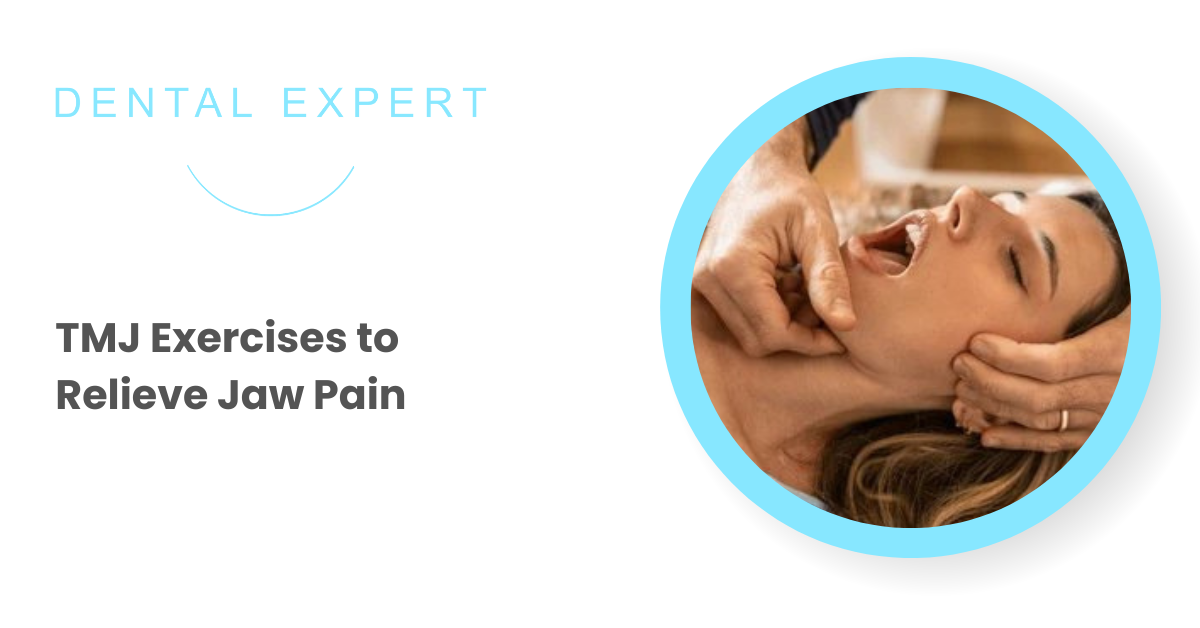We often don’t think about all the work our jaw performs until it starts causing discomfort. The temporomandibular joint (TMJ) does a lot of heavy lifting, so jaw pain exercises and jaw pain stretches can help reduce the stress that leads to jaw pain.
The TMJ joints connect the jawbone to the skull and they’re putting in a substantial effort every time we yawn, speak, chew, talk, laugh, and even swallow.
Regularly practicing jaw exercises to relieve tension, along with using a mouth guard at night, can help reduce jaw pain, especially in the morning.
Why Do People Experience Jaw Pain?
There are quite a few reasons why some people develop TMJ disorders, which can include injury to the jaw, overuse of the joint because of issues like teeth grinding or clenching, and even arthritis in the TMJ joint that can lead to inflammation and pain.
The symptoms of TMJ disorders can range from mild and annoying to others that are more severe. With the most severe symptoms, chronic jaw pain from TMJ can seriously diminish a person’s quality of life.
Some of the Most Common TMJ Symptoms Can Include the Following:
- Headaches
- Ear, face, neck, and jaw pain
- Lockjaw (Trismus)
- Difficulty chewing due to pain
- Popping or clicking sounds in the jaw and ears
How Do Jaw Exercises For TMJ Help Relieve Pain?
Like with other joints in the body, TMJ exercises can be beneficial for improving movement in the jaw.
Jaw exercises help relieve pain by strengthening the jaw, stretching the soft connective tissue to increase mobility, and reduce the annoying clicking and popping sounds.
Healthy and strong temporomandibular joints are less likely to cause unexpected problems and pain, especially in the morning if grinding and teeth clenching at night is an issue while sleeping.
Many people even unknowingly grind or clench their teeth during the day when stressed out from work or other obligations.
Here are 7 TMJ Exercises for Jaw Pain
Relaxation and Stress Reduction
In a seated position, relax the jaw and slowly inhale air through the nose and into the stomach instead of the chest.
Next, slowly exhale air out of the mouth, while focusing on a loose and relaxed jaw.
Repeat the Relaxation and Stress Reduction process several times. Make a point of performing this exercise at least a few times throughout the day when you’re experiencing jaw pain.
Open Mouth Stretch
With your head in a neutral position, open your mouth as wide as comfortably possible.
Hold the stretch, with the tongue in a relaxed position, for 5 to 10 seconds, and then slowly close the mouth without clenching the jaw.
Repeat the Open Mouth Stretch up to 10 times in a row.
Also Read: Alternatives to TMJ Exercises For Jaw Pain
Push Jaw Stretch
With the tongue touching the top of the mouth, push your jaw forward as much as it will go.
Hold this position for up to 10 seconds and then retract the jaw as far as it will go, keeping this position for the same amount of time.
Repeat the Push Jaw Stretch movement several times.
Gliding Jaw Stretch
With the head in a neutral position, slowly and deliberately glide the jaw side to side.
As it becomes more comfortable, hold the jaw on either side for 5 to 10 seconds. Perform the Gliding Jaw Stretch exercise a few times to relieve tension and pain.
Closing Resistance Exercise
Open your mouth and place the index fingers of both hands over your lower front teeth. Maintain downward pressure as you close your mouth.
You will feel the resistance in your jaw while closing. The Closing Resistance Exercise helps to strengthen muscles in the jaw, repeat it 5 times.
Open Resistance Exercise
With your thumb firmly placed beneath the chin, open the mouth slowly while pushing against the chin for resistance.
Hold this position for up to 5 seconds and repeat the movement several times. The Open Resistance Exercise also helps strengthen the jaw muscles.
Assisted Jaw Stretch
With a thumb placed on the upper front teeth and the other thumb on the tips of the lower front teeth, slowly open mouth as much as is comfortable.
Feel the stretch and hold the position for several seconds and repeat the Assisted Jaw Stretch up to five times.
Always consult your facial pain specialist or a TMD specialist for further help and treatments. Do not continue with the exercises if pain persists or worsens and consult your doctor immediately.
Dr. Denzil Albuquerque is a specialist in TMD diagnosis and treatments with a specialised degree and training from the USA.
Videos That Demonstrate TMJ Exercises for Jaw Pain
The TMJ exercises above can be effective for reducing jaw pain in the temporomandibular joint, and can be done when discomfort appears as a way to relax or strengthen the jaw.
For those who would benefit from a visual demonstration, this video by Ask Doctor Jo illustrates simple TMJ stretches and exercises to relieve jaw pain.

